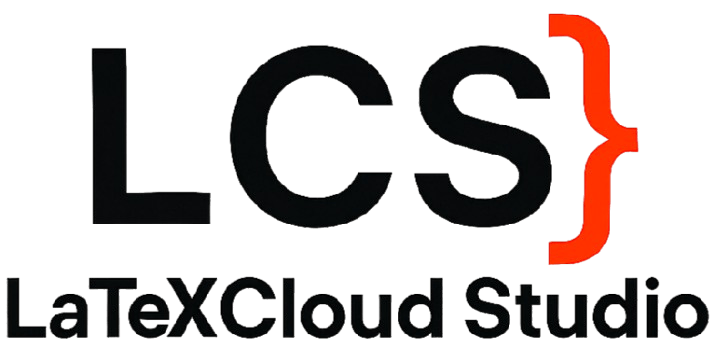\documentclass[11pt,a4paper]{article}
% Essential packages
\usepackage[utf8]{inputenc}
\usepackage[T1]{fontenc}
\usepackage{amsmath,amssymb,amsthm}
\usepackage{graphicx}
\usepackage{hyperref}
\usepackage[margin=1in]{geometry}
\usepackage{enumitem}
\usepackage{cite}
% Metadata
\title{Your Article Title Here}
\author{
First Author\thanks{Department of Mathematics, University Name} \\
\texttt{first.author@email.com} \\
\and
Second Author\thanks{Department of Physics, Another University} \\
\texttt{second.author@email.com}
}
\date{\today}
% Custom commands (optional)
\newcommand{\R}{\mathbb{R}}
\newcommand{\N}{\mathbb{N}}
\begin{document}
\maketitle
\begin{abstract}
This abstract should summarize your article in 150-250 words. Include the main objectives, methodology, key findings, and conclusions. Make it self-contained so readers can understand your work without reading the full article.
\textbf{Keywords:} keyword1, keyword2, keyword3, keyword4
\end{abstract}
\section{Introduction}
Begin your article with context and motivation. Explain why this topic is important and what problem you're addressing. Include relevant background information and cite previous work \cite{example2023}.
State your main contributions clearly:
\begin{itemize}
\item First contribution
\item Second contribution
\item Third contribution
\end{itemize}
\section{Background and Related Work}
Provide necessary background information and review related literature. This helps readers understand the context of your work.
\subsection{Theoretical Background}
Explain key concepts and theories. For example, consider the equation:
\begin{equation}
E = mc^2
\label{eq:einstein}
\end{equation}
As shown in Equation \ref{eq:einstein}, energy and mass are related...
\subsection{Previous Approaches}
Discuss how others have approached this problem. Compare and contrast different methods, highlighting their strengths and limitations.
\section{Methodology}
\subsection{Problem Formulation}
Clearly define your problem. Use mathematical notation when appropriate:
\begin{definition}
Let $X$ be a set and $f: X \to \R$ be a function. We say $f$ is \emph{continuous} if...
\end{definition}
\subsection{Proposed Solution}
Describe your approach in detail. Use algorithms, flowcharts, or diagrams as needed.
\begin{theorem}
Under conditions A and B, our method converges in $O(n \log n)$ time.
\end{theorem}
\begin{proof}
The proof follows from...
\end{proof}
\section{Results and Discussion}
\subsection{Experimental Setup}
Describe your experiments, data, and evaluation metrics.
\subsection{Results}
Present your findings using tables and figures:
\begin{table}[h]
\centering
\caption{Comparison of different methods}
\label{tab:results}
\begin{tabular}{|l|c|c|c|}
\hline
\textbf{Method} & \textbf{Accuracy} & \textbf{Speed} & \textbf{Memory} \\
\hline
Baseline & 85.2\% & 1.0x & 100 MB \\
Our Method & \textbf{92.7\%} & 0.8x & 95 MB \\
State-of-art & 91.3\% & 0.5x & 150 MB \\
\hline
\end{tabular}
\end{table}
\begin{figure}[h]
\centering
\includegraphics[width=0.8\textwidth]{figure1.png}
\caption{Performance comparison across different datasets}
\label{fig:performance}
\end{figure}
\subsection{Discussion}
Analyze your results. Discuss:
\begin{itemize}
\item Why your method works
\item Limitations and edge cases
\item Comparison with existing approaches
\item Practical implications
\end{itemize}
\section{Conclusion}
Summarize your key findings and contributions. Discuss the broader impact of your work and suggest future research directions.
\subsection{Future Work}
Outline potential extensions:
\begin{enumerate}
\item Extension to other domains
\item Improving computational efficiency
\item Addressing current limitations
\end{enumerate}
\section*{Acknowledgments}
Thank funding agencies, collaborators, and anyone who helped with the work.
% Bibliography
\bibliographystyle{plain}
\bibliography{references}
% Or use manual bibliography
\begin{thebibliography}{9}
\bibitem{example2023}
Author, A. B.,
\textit{Title of the Article},
Journal Name, vol. 10, no. 2, pp. 123-145, 2023.
\bibitem{book2022}
Writer, C. D.,
\textit{Book Title},
Publisher, 2nd ed., 2022.
\end{thebibliography}
% Appendix (optional)
\appendix
\section{Additional Proofs}
Include lengthy proofs or technical details that would interrupt the main flow.
\section{Implementation Details}
Provide code snippets or algorithms:
\begin{verbatim}
def algorithm(data):
# Process data
result = process(data)
return result
\end{verbatim}
\end{document}
